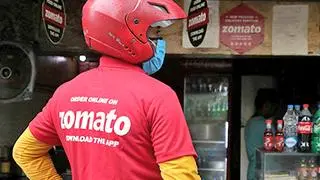Concerned about the growth prospects in a key market like India, Renault India's Country CEO and Managing Director Sumit Sawhney expressed the need for a wholistic approach in designing the policy framework to reduce vehicular pollution.
Calling for a full-game plan before implementation of Euro 6 emission norms in 2020, Sawhney underlined key challenge of availability of the higher grade fuel across the country.
"The Government wants us to do in four years, which Europe took 11 years to do - moving from Euro 4 to Euro 6. We moved to Euro 4 but that is still not available across the country. Technology-wise, a Euro 4 car would still run on Euro 3 fuel, but that is not possible in Euro 6. So, the higher grade fuel has to be made available across the country at least a year before the final rollout in 2020," said Sawhney here on the sidelines of the launch of all new Renault Duster with AMT.
Policy changes
Sawhney also raised concerns about the sporadic and irregular policy changes in the name of environment protection. "To move from Euro 3 to Euro 4 we had to invest a lot of money for technology. A Euro 4 car emits one-fourth the emissions than a Euro 3 car. Hence, from the point of environment protection even Euro 4 is much environment-friendly," he said.
Sawhney further mentioned that Renault is confident of increasing its market share in India from a current 4.4 per cent till April 2016, to over 5 per cent by 2017.
The company is also planning to launch 1-litre Kwid model in the first half of current calendar year, while AMT Kwid is planned for the launch in second half.
However, a ban on new registration of diesel cars above 2000 cc in Delhi has already caused nervousness among the automobile players. "Even though the automotive sector isn't the biggest polluter, there is a need to prepare a full-game plan. As a country we need to have a scrappage policy of old cars, which are replaced with new cars. They also contribute to a large extent to environment challenges seen caused by the industry," he added.
Petrol vs diesel
Commenting on the trend for petrol and diesel cars, Sawhney mentioned that the difference between prices of petrol and diesel has reduced to Rs 10 a litre, from Rs 26 a litre earlier.
"At the price difference of Rs 26, even small cars (sub-four meters) were viable with incremental cost of Rs 70,000-80,000 for diesel model. The price gap has now reduced to Rs 10, so investing about 17-20 per cent more for a small car is no longer viable. But when we talk of cars costing above Rs 8 lakh, paying Rs 80,000 or 9 per cent extra on total cost of diesel car still makes a viable proposition," said Sawhney.
He pointed out that in sub-four metre cars there would be increased trend towards petrol and for cars above Rs 7 lakh, there would still be a trend for diesel.






Comments
Comments have to be in English, and in full sentences. They cannot be abusive or personal. Please abide by our community guidelines for posting your comments.
We have migrated to a new commenting platform. If you are already a registered user of TheHindu Businessline and logged in, you may continue to engage with our articles. If you do not have an account please register and login to post comments. Users can access their older comments by logging into their accounts on Vuukle.